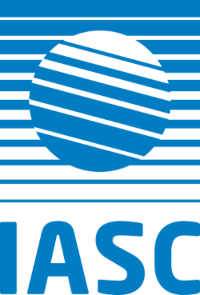 The AQUIRE-workshop aimed at synthesizing a list of questions that identified the most pressing research questions concerning interactions among stressors of climate change, resource development and landscape transformations and the aquatic ecosystems that provide critical ecosystem services. The workshop agenda is listed in Appendix 1.
The AQUIRE-workshop aimed at synthesizing a list of questions that identified the most pressing research questions concerning interactions among stressors of climate change, resource development and landscape transformations and the aquatic ecosystems that provide critical ecosystem services. The workshop agenda is listed in Appendix 1.
Prior to the workshop, responses to a survey were received from 46 of 60 experts from all seven Arctic countries with a total of 177 questions submitted. The Steering Committee assessed the questions for redundancy and overlap and developed a final set of 77 questions. The Steering Committee then grouped the questions into the following 9 thematic categories: 1) Anthropogenic development, 2) Biodiversity and taxonomic challenges, 2) Ecosystem connectivity, 4) Food webs and productivity, 5) Hydrological change, 6) Methods, monitoring and assessment, 7) Permafrost change, 8) Traditional knowledge, and 9) Winter ecology.
Next, the Steering Committee and the experts ranked the 9 thematic categories in order of importance (on a 1–9 scale) for improving our understanding of Arctic freshwater processes and conditions as they affect biodiversity. Furthermore, this expert group assessed the relative importance of the questions within each category by assigning points from a proportional budget. For this, the experts were given a “budget of points” within each category from which they could assign a relative importance weight (i.e., points) to questions in each category. Questions deemed more important were assigned the most points, and the budget did not necessarily permit the expert to award points to every question. Figure 1 summarizes the flow of work.
 During the workshop in Copenhagen the group, consisting of five senior and three early career scientists (Figure 2) brainstormed about statistical approaches and data interpretations, viewed and discussed preliminary analyses to reach consensus about data interpretations and appropriate figures, tables, and illustrations for an upcoming scientific paper. The group also spent quite a bit of time drafting text for the planned scientific publication. The top questions within each category are listed in Table 1.
During the workshop in Copenhagen the group, consisting of five senior and three early career scientists (Figure 2) brainstormed about statistical approaches and data interpretations, viewed and discussed preliminary analyses to reach consensus about data interpretations and appropriate figures, tables, and illustrations for an upcoming scientific paper. The group also spent quite a bit of time drafting text for the planned scientific publication. The top questions within each category are listed in Table 1.
Scientific highlights:
- Experts in Arctic freshwater biodiversity identified 77 key questions that, if answered, will aid the protection and sustainable development of Arctic freshwater ecosystems.
- A set of key messages for future research agendas and policy actions.
Expected scientific output
- Culp JM, Power M, Chaguaceda F, Christoffersen KS, Goedkoop W, Hebert M-P, Kahilainen K, Moedt S, et al. “Assessment of Key Research Questions for Arctic Freshwater Biodiversity” (working title)
- Summary for policymakers.
- Scientific meeting presentations
Table 1. Thematic categories identified by the experts (in caps) and the top question within each category.
Photo, top left: Participants of the AQUIRE Workshop (November 13-16). (Left to right: M-P Hebert, K. Christoffersen, W. Goedkoop, M. Power, K. Kahilainen, J. Culp, S. Moedt, F. Chaguaceda). Photo credit: Lars Båstrup-Spohr.
Photo, middle-right: Outline of the flow of work prior to and during the AQUIRE workshop.
–––––––––––––––––––––––––––––––––––––––––––––––––––––––––––––––––––––––––––––––––
1. BIODIVERSITY AND TAXONOMIC CHALLENGES: “What are the linkages between large-scale biotic distributions and physical-chemical habitat conditions over wide geographic areas and how do these patterns relate to freshwater biodiversity?”
2. ECOSYSTEM CONNECTIVITY: “To what degree will spatial connectivity and barriers to dispersal slow or prevent the northward movement of species as northern ecoregions warm and become more habitable?”
3. HYDROLOGICAL CHANGE: “How will the effects of extreme events, such as floods, wildfires, drought, extreme heat and landslides, impact overall freshwater aquatic biodiversity and the potential loss of freshwater habitat?”
4. METHODS, MONITORING AND ASSESSMENT: “There is a critical need to develop and implement comprehensive and coordinated biomonitoring programs (i.e., biota and physicochemical variables) for Arctic freshwaters to improve the assessment of climate-driven ecological impacts, determine the vulnerability of biotic communities, and measure ongoing changes in freshwater biodiversity.”
5. PRODUCTIVITY AND FOOD WEBS: “How will climate-related changes affect stream and lake productivity, and community structure and function throughout the Arctic?”
6. TRADITIONAL KNOWLEDGE: “How can we ensure future Arctic freshwater biomonitoring programs emphasize co-production linkages between Indigenous and scientific knowledge to improve understanding of how freshwater biodiversity changes may affect the livelihoods of northern communities?”
7. PERMAFROST: “How will permafrost thaw and thaw slumps modify the physical and chemical properties of Arctic freshwater ecosystems and will such changes trigger shifts in ecosystem productivity and diversity?”
8. WINTER ECOLOGY: “What are the ecological consequences of warming winters on freshwater ecosystem productivity, community composition and the expansion rates of warm-water adapted species?”
9. ANTHROPOGENIC DEVELOPMENT: “How might extreme events induced by climate change (e.g., winter ice breakup, summer flooding) exacerbate the cumulative effects of multiple stressors (e.g., increased sediments, nutrients, contaminants) on freshwater biodiversity?”
–––––––––––––––––––––––––––––––––––––––––––––––––––––––––––––––––––––––––––––––––
Date and Location
13-15 November I Copenhagen, Denmark
IASC Working Groups funding the project
- Cryosphere WG
- Terrestrial WG
Project Lead
Willem Goedkoop, Swedish University of Agricultural Sciences, Sweden
Year funded by IASC
2024
